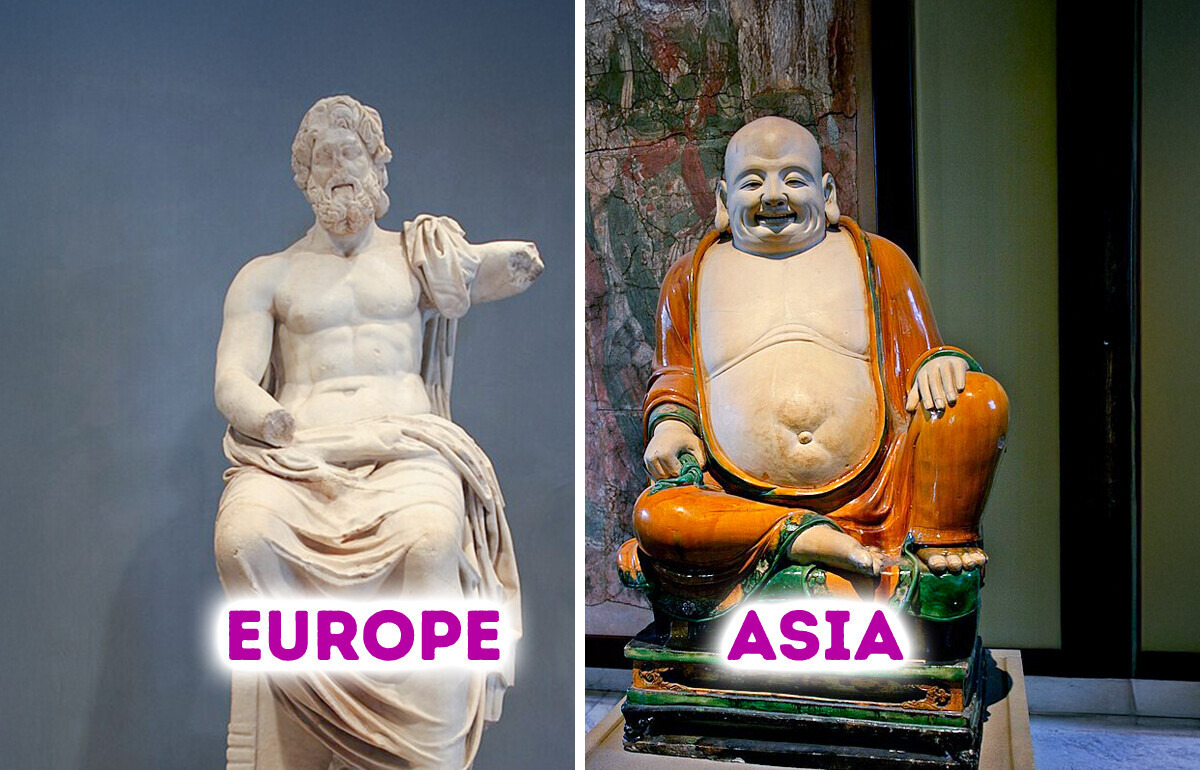10+ Times Kids Unintentionally Embarrassed Their Parents With Mortifying Revelations


From the chiseled perfection of a Greek god carved from marble to the serene tranquility of a Buddha cast in bronze, the way European and Asian statues depict the human body couldn’t be more different. This stark artistic divergence isn’t a matter of skill but a profound reflection of deeply rooted cultural and spiritual philosophies. Let’s dive into the fascinating reasons behind these distinct artistic traditions.
The biggest reason Greek and Asian sculptures look so different comes down to how each culture saw people. The ancient Greeks had a philosophy called humanism, which basically means they believed humans were the center of the universe. This idea that “Man is the measure of all things” completely shaped their art and made the human body its ultimate subject.
The Greeks imagined their gods as having ideal, super fit human bodies. So for them, carving a flawless statue was the ultimate way to honor both people and the gods. This focus on physical idealization is why their art aimed for a super realistic, yet impossibly ideal, style.
Meanwhile, in Asia, spiritual traditions like Buddhism and Hinduism taught a very different lesson. They viewed the physical world and the human body as temporary, something to rise above. Since attachment to the body was seen as a cause of suffering, making a perfectly accurate statue was not the goal. Their art became more symbolic, using the body to express deep spiritual ideas rather than to celebrate its physical form.
The Greeks were obsessed with perfection, and they believed they could achieve it using logic and math. Their artists created detailed rulebooks, called artistic canons, that used precise mathematical formulas. These rules dictated exactly how to sculpt the perfect, idealized human body.
A famous sculptor named Polykleitos literally wrote the book on this, called the “Kanon”. He created a system where every body part had the perfect mathematical size in relation to every other part. His statue of the Doryphoros, or Spear-Bearer, was the ultimate example of this theory in action. This search for mathematical harmony is why Greek statues have that flawlessly proportioned look.
The materials artists chose also tell us a lot about their goals. Greek sculptors were masters of marble and bronze. Marble was perfect for creating that smooth skin and showing off subtle muscles. Bronze was even better for crafting complex, action packed poses that would be impossible to carve from stone.
Asian artists used a much wider variety of materials, including stone, wood, lacquer, and even clay. These materials were often chosen for their special symbolic meanings. In Asian art, symbolism is the main event. Instead of focusing on a perfect body, artists used a whole language of specific hand gestures and features to communicate spiritual ideas.
In the end, the powerful physique of a Greek god and the peaceful form of a meditating Buddha offer two distinct yet equally profound visions of humanity. Check this article to explore more: The White Myth We’ve Been Told About Ancient Statues











